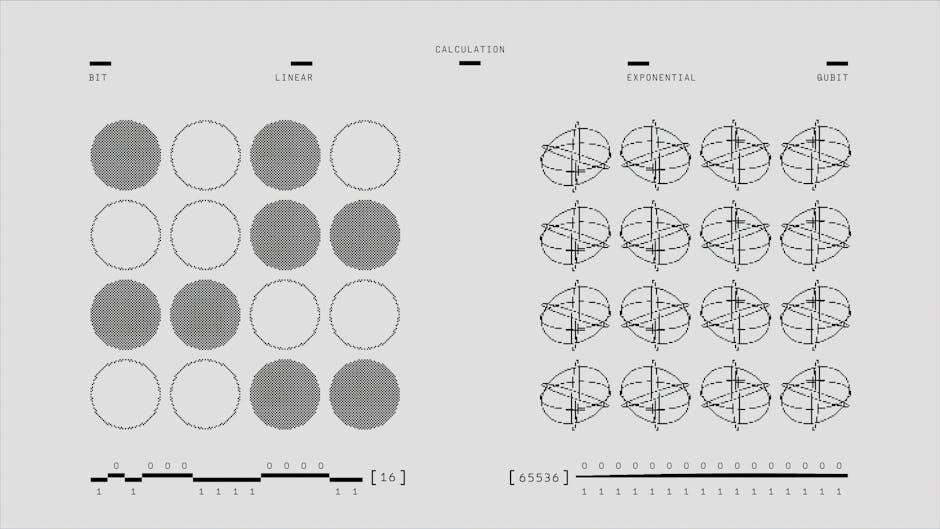Transitioning to advanced mathematics involves mastering proofs, logic, and abstract structures. Textbooks like Mathematical Proofs: A Transition to Advanced Mathematics by Chartrand facilitate this journey, covering essential topics like set theory and algebra, preparing students for higher-level mathematical reasoning and problem-solving.
Overview of Transition Courses in Mathematics
Transition courses in mathematics are designed to bridge the gap between lower-level computational courses and upper-level theoretical studies. These courses emphasize the development of proof-writing skills, logical reasoning, and abstraction, preparing students for advanced mathematical concepts. They often cover foundational topics such as set theory, basic algebra, and an introduction to real analysis. Resources like A Transition to Advanced Mathematics and Mathematical Proofs provide structured approaches to these concepts. The goal is to foster a deeper understanding of mathematical structures and their applications, enabling students to approach problems with a more analytical mindset. Such courses are essential for students pursuing higher-level mathematics, as they build the necessary toolkit for success in abstract and theoretical environments.
The Importance of Proofs in Advanced Mathematics
Proofs are fundamental to advanced mathematics as they establish the validity of mathematical statements and theories. They provide a logical framework for understanding complex concepts and ensure the integrity of mathematical reasoning. Through proofs, mathematicians can validate theories, explore new ideas, and build upon existing knowledge. Textbooks such as Mathematical Proofs: A Transition to Advanced Mathematics emphasize the significance of proofs in developing critical thinking and problem-solving skills. Proofs also foster a deeper understanding of underlying principles, enabling mathematicians to approach problems with clarity and precision. They serve as a cornerstone for innovation and collaboration in mathematics, facilitating the development of new theories and applications.

Key Components of a Transition Course
A transition course emphasizes proofs, logic, set theory, and abstract algebra, bridging lower-level mathematics to advanced studies. It focuses on developing rigorous reasoning and problem-solving skills.
Logic and Propositional Statements
Logic and propositional statements are fundamental in transitioning to advanced mathematics. They introduce students to the principles of valid reasoning, enabling them to construct and analyze mathematical arguments. Through logical connectives, quantifiers, and truth tables, students learn to express and evaluate statements rigorously. These concepts are essential for understanding proofs and abstract structures, as they form the basis of mathematical reasoning. Textbooks like Mathematical Proofs: A Transition to Advanced Mathematics emphasize these topics, providing exercises in logical deductions and proof techniques. Mastery of logic and propositional statements equips students with critical thinking skills, preparing them for the abstract nature of higher-level mathematics.
Set Theory and Its Applications
Set theory serves as a foundational pillar in advanced mathematics, providing a framework for understanding collections of objects and their properties. It introduces concepts like sets, subsets, union, intersection, and complement, which are crucial for building mathematical structures. Through set theory, students learn to work with well-defined collections, enabling precise communication in proofs and abstract reasoning. Applications of set theory are vast, ranging from real analysis to discrete mathematics; Textbooks such as Mathematical Proofs: A Transition to Advanced Mathematics emphasize these principles, illustrating their relevance in solving complex problems. Mastery of set theory is essential for advancing in fields like abstract algebra and number theory, as it provides the tools necessary for rigorous mathematical exploration and analysis.
Abstract algebra and number theory form the backbone of advanced mathematical studies, introducing students to structured systems and properties of numbers. Abstract algebra explores algebraic structures like groups, rings, and fields, which are fundamental to understanding symmetry and patterns. Number theory delves into the properties of integers, including divisibility, prime numbers, and congruences. Together, these areas emphasize proof-based reasoning and abstract thinking. Textbooks such as Mathematical Proofs: A Transition to Advanced Mathematics provide comprehensive coverage of these topics, preparing students for higher-level courses in real analysis and theoretical mathematics. Mastery of these concepts is essential for careers in cryptography, coding theory, and theoretical computer science, where deep mathematical insight is required.

Mathematical Reasoning and Problem-Solving Strategies
Developing logical reasoning and analytical skills is crucial for advanced mathematics. Strategies include breaking down problems, understanding proofs, and applying creative thinking to find solutions;
Abstraction and Generalization in Mathematics
Abstraction and generalization are cornerstone skills in advanced mathematics, enabling mathematicians to simplify complex ideas into fundamental concepts. Transition courses emphasize these skills, teaching students to identify universal patterns and principles across mathematical domains. For instance, abstract algebra generalizes arithmetic operations, while set theory provides a framework for understanding collections of objects. These concepts are explored in resources like Mathematical Proofs: A Transition to Advanced Mathematics, which guides learners through logical reasoning and proof-based thinking. By mastering abstraction and generalization, students can approach problems with greater flexibility, applying mathematical tools to diverse scenarios. This skill set is crucial for tackling upper-level courses in real analysis, abstract algebra, and number theory, as it fosters deep conceptual understanding and innovative problem-solving.
Common Pitfalls and Challenges in Transitioning to Advanced Mathematics
Transitioning to advanced mathematics presents unique challenges, including the shift from computational to proof-based reasoning. Students often struggle with abstraction, as it requires moving beyond concrete examples to general principles. Additionally, the emphasis on rigorous logical thinking and the need to understand complex structures can be overwhelming. Many learners face difficulties in managing the increased complexity and open-ended nature of problems. Textbooks like Mathematical Proofs: A Transition to Advanced Mathematics highlight these challenges, emphasizing the importance of practice and persistence. Overcoming these obstacles involves developing strong problem-solving skills, fostering creativity, and embracing a growth mindset. These challenges are fundamental to building a deep understanding of advanced mathematical concepts and preparing for upper-level coursework.

The Role of Creativity in Mathematical Problem Solving
Creativity plays a vital role in mathematical problem solving, especially in advanced contexts. It enables mathematicians to formulate innovative approaches and connect seemingly unrelated concepts. Textbooks like Mathematical Proofs: A Transition to Advanced Mathematics emphasize the importance of creative thinking in tackling non-routine problems. Creativity helps in devising unique strategies, such as analogy, intuition, and experimentation, to uncover solutions. It also fosters the ability to visualize abstract structures and explore uncharted mathematical territories. By encouraging creative reasoning, advanced mathematics bridges the gap between computation and theory, preparing students to address complex, open-ended challenges. This skill is not only essential for academic success but also invaluable in real-world applications, where innovative problem-solving is highly sought after.

Real-World Applications and Career Relevance
Advanced mathematics is crucial for STEM fields, enabling innovations in engineering, physics, and data science. Textbooks like A Transition to Advanced Mathematics prepare students for careers in cryptography, optimization, and research, highlighting its practical significance.
Applications of Advanced Mathematics in STEM Fields
Advanced mathematics is foundational to STEM disciplines, driving innovation in engineering, physics, computer science, and data analysis. Textbooks like Mathematical Proofs: A Transition to Advanced Mathematics emphasize the role of abstract algebra, calculus, and real analysis in solving real-world problems. For instance, abstract algebra underpins cryptography, while calculus and differential equations model complex systems in physics and engineering. These mathematical tools enable the development of algorithms in computer science and optimization techniques in data science. By mastering these concepts, students gain the analytical and problem-solving skills essential for advancing STEM fields. The practical applications of advanced mathematics ensure its relevance in addressing global challenges and fostering technological progress.
Career Opportunities for Students of Advanced Mathematics
Students of advanced mathematics unlock diverse career opportunities across various industries. Proficiency in mathematical proofs, logic, and abstract structures equips graduates for roles in cryptography, data science, and engineering. Textbooks like Mathematical Proofs: A Transition to Advanced Mathematics by Chartrand prepare students for careers requiring strong analytical and problem-solving skills. Advanced mathematical knowledge is highly valued in fields such as finance, artificial intelligence, and optimization. Graduates often pursue roles as mathematicians, data analysts, or researchers, contributing to technological advancements and scientific breakthroughs. The ability to think critically and approach complex problems logically makes advanced mathematics students versatile and highly sought after in the job market.